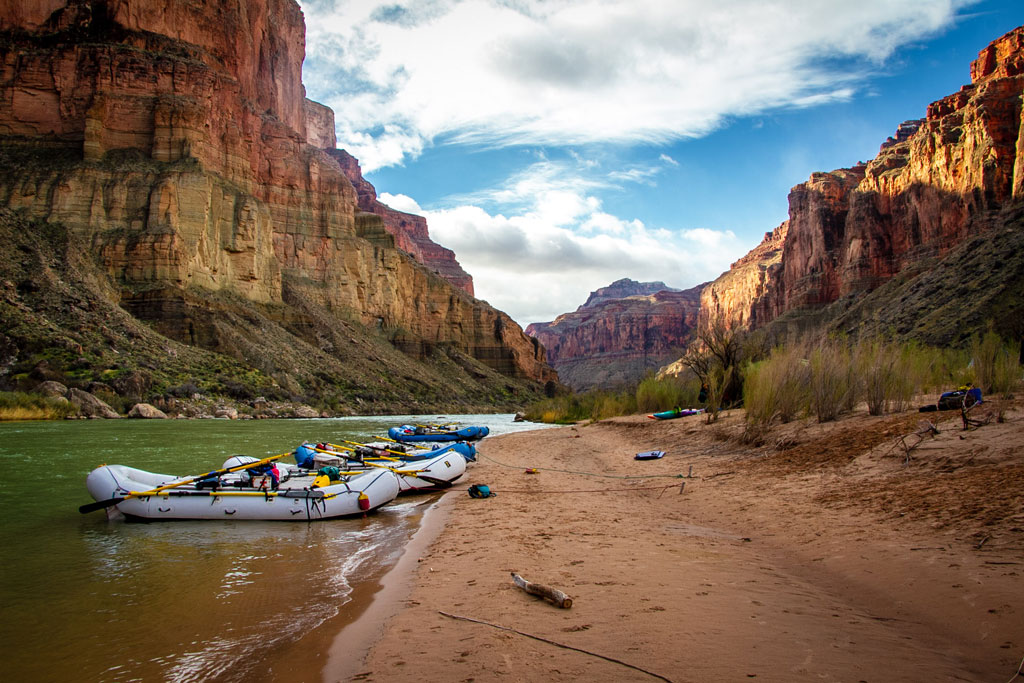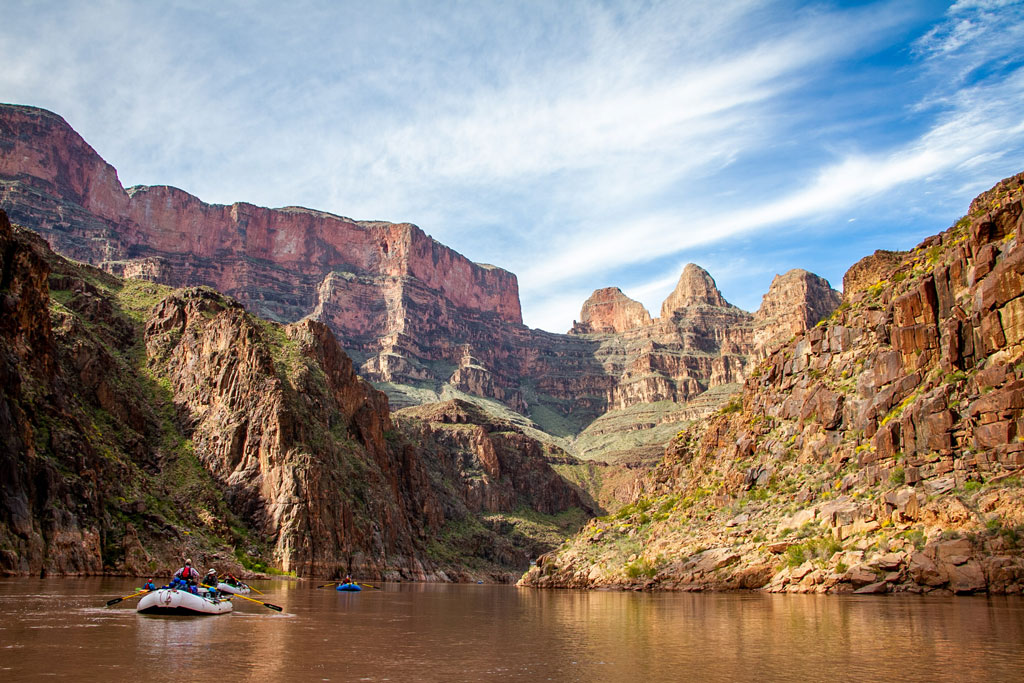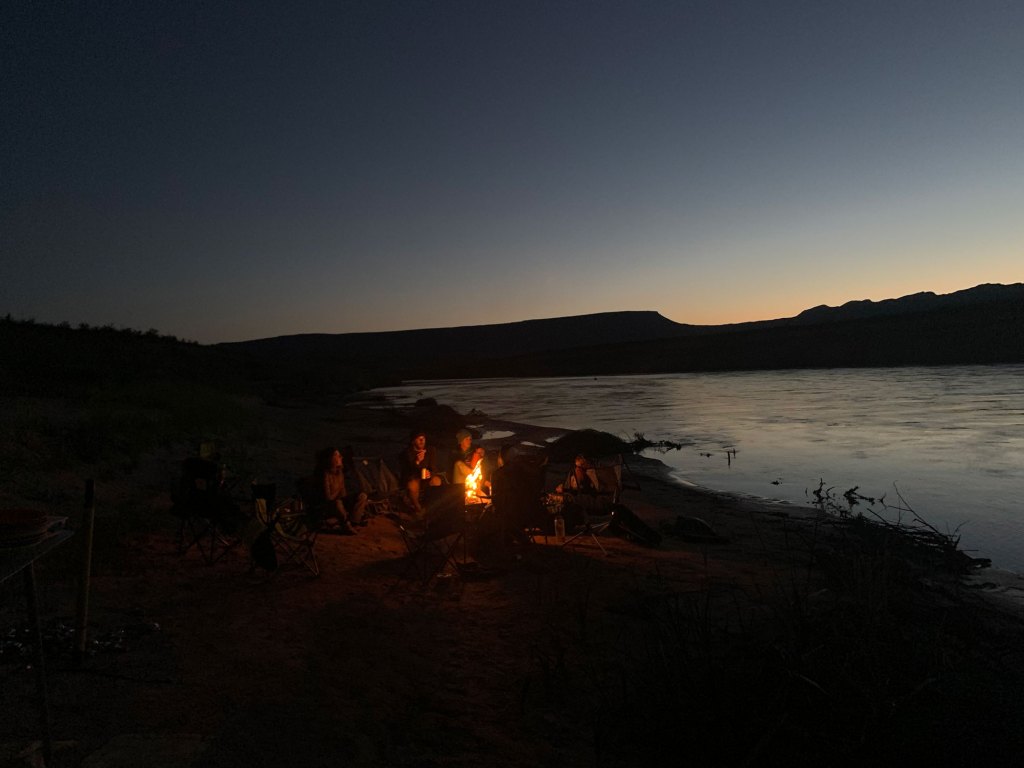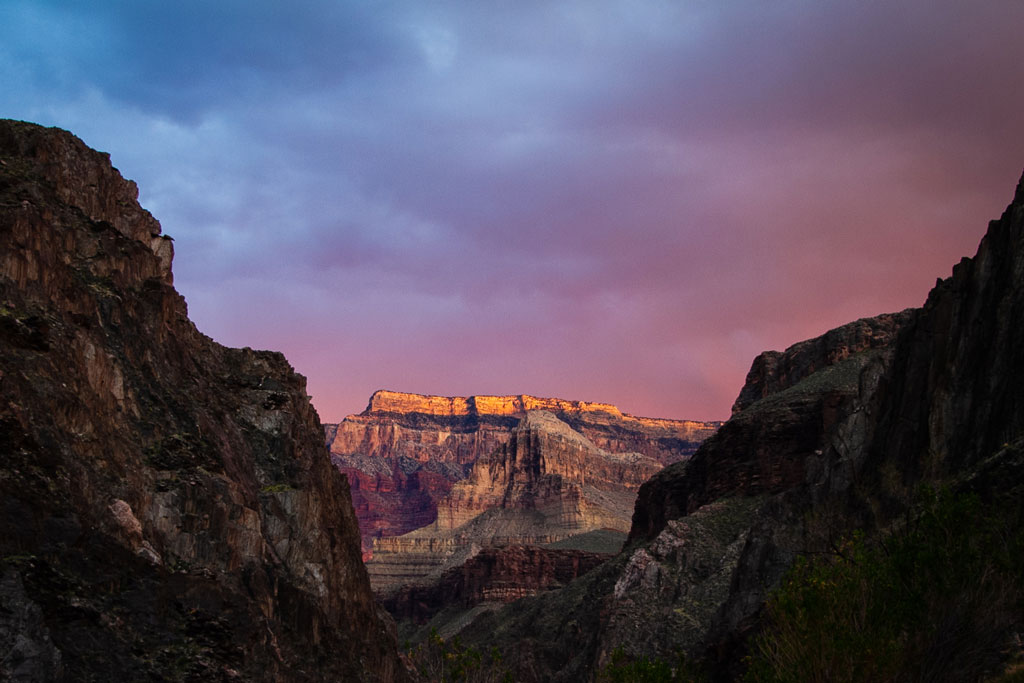This op-ed represents the opinions of Corey Buhay.
Months ago, I was floating down the home stretch of a 20-day, 279-mile Grand Canyon rafting trip. I’d spent three weeks immersed in remote landscapes—no cell service or internet, no cars or airplane noise, no ceilings or walls. Removed from those distractions, I felt like a new person, like I’d reconnected with a piece of myself that had been missing.
But when our crew of 15—a motley group of seasoned rowers, kayakers and friends-of-friends—came ashore, we were greeted from a distance by our shuttle driver, a woman named Marilyn. “The world you’re coming back to is not the one you left,” she told us. It was April 3, 2020.

Photo Credit: Erin Horn London
About three weeks earlier, I had stuffed a tent, a drysuit, Edward Abbey’s Desert Solitaire and several duffels full of clothes into the back of my friend’s car and started driving west from my home in Boulder, Colorado. We were headed to Flagstaff, Arizona, to meet the rest of the crew and get ready for our put-in date that weekend.
As I prepared for my first-ever rafting trip, nerves and excitement filled my head. I was only keeping half an eye on the news. At the time, I knew the COVID-19 situation in Europe was worsening and that the outbreak had reached Seattle. But, at the time, I couldn’t fathom that the virus would spread to the rest of the United States.
Only later did I find out that the day we left cell service, March 14, was the day my hometown declared a local disaster emergency. While we were paddling the Colorado River, dozens of states, including Colorado, issued stay-at-home orders, schools and businesses shut down across the country, and the coronavirus grew into an unprecedented national health emergency.
Our only clue about the rapidly changing situation was one cryptic satellite message from our outfitter, which told us that the road to our original takeout point at Diamond Creek Beach was closed—we were later told it was a COVID-response measure by the Hualapai Tribe, whose lands surround the takeout—and that we’d have to row another 60 miles to meet our shuttle. Aside from that, we didn’t know what to expect.

Photo Credit: Erin Horn London
We spent those last 60 miles floating through the desolate, seldom-paddled silt flats. The hoarse roar of the rapids and the echoing trickles of the side canyons were gone. We rowed in eerie silence, wondering what had happened while we were gone. Now, we were about to get caught up.
“Restaurants are closed. Hotels are closed,” said Marilyn, who works for Ceiba Adventures, the outfitter we’d hired for our gear rentals and shuttles. “We will be driving straight back, and we will not be stopping except to fill up gas. We will not get out of the car at the gas station.”
The virus is everywhere, she told us. Double-check your flights; they may have been canceled. Double-check your route home; your state’s borders might be closed. You will have to quarantine in your house for two weeks. The world is on lockdown. My head was spinning.
We washed our hands and loaded into the shuttle van. About halfway back to Flagstaff, we hit cell service and our phones started buzzing. “I’m not turning mine on,” said one of the guys in the seat in front of me. “I don’t want to look.”
We could only put it off for so long. Messages rolled in—worried texts from friends, emails from bosses about closed offices. News updates. Death tolls. I started to panic. My partner and I live full time in a van. We’ve always considered our situation ideal for any kind of disaster resilience, but, like most people, we were not prepared for a pandemic.
Thankfully, a close friend took us in for those first few months of quarantine.
During that time, I ventured outside to run or walk, but the peace I felt while in the Grand Canyon was replaced by a slow-simmering anxiety.
Over the years, nature has always been a source of calm for me. I have a history of anxiety, depression and eating disorders, and I credit the time I’ve spent in remote woodlands to helping me find peace and learn to rely on myself. In college, backpacking in North Carolina’s Pisgah National Forest and the Great Smoky Mountains taught me to trust my body after a decade of constant battle with it.
Amid the stresses of daily life during a pandemic, I realized that, more than ever, I needed the shift in perspective that extended time in the outdoors had always provided—just as stay-at-home orders, public lands closures and travel bans were making it uniquely difficult to achieve.
For a lot of people, the pandemic has turned life upside down. It’s decimated savings, derailed dreams and thrown the future into dark uncertainty. I’ve been fortunate to have remained relatively unscathed so far, especially compared with those who have fallen sick, lost jobs, buried loved ones or faced other challenges.
The impacts of COVID-19 have disproportionately affected Native Americans, including Native tribes in the Grand Canyon area where I was. The Navajo Nation and Hualapai Tribe, for example, have experienced some of the highest per-capita rates of COVID-19 in the country. Decisions to close areas, like the Diamond Creek takeout or suspend Havasupai tourism, can also have significant economic impacts on the Native communities the measures are designed to help protect.
Fifty-three percent of adults report that pervasive concerns about the virus have negatively impacted their mental health, according to a poll conducted in July by the Kaiser Family Foundation. These adverse mental health effects are often much worse for BIPOC (Black, Indigenous and People of Color) communities, who not only experience higher rate of infection and death rates from COVID-19, but also have historically limited access to both medical and mental health care, according to the CDC.
For those who’ve lost jobs, unemployment is connected to long-term negative mental health effects. In fact, one recent survey has correlated pandemic-related income loss—where racial disparities persist—to a higher occurrence of clinically significant depression and anxiety symptoms, concluding that a quarter of all U.S. adults are experiencing “high emotional distress.” As the pandemic wears on, the World Health Organization expects a spike in mental health conditions in its wake.
As we navigate and eventually recover from this crisis, we’ll need to rely on the mental health-boosting effects of nature—oft-prescribed for everything from addiction recovery to depression—more than ever. We’re already seeing more people spending time outdoors: States like Minnesota and Pennsylvania have recorded up to 200 percent increases in year-over-year trail use during the pandemic, and camping booking services have reported up to 400 percent growth, according to The Guardian.
“There’s something special about the deep woods, the wide-open desert, the high peaks, even the lusher corners of an urban park. Those places help remove us from the anxieties and immediate pressures of everyday life. They remind us of who we are: part of the fabric of something greater.”
Right now, we need outdoor spaces free from the distractions of modern technology and the negativity of our never-ending internet feeds. There are plenty of mental health benefits to be found in spending time outdoors, be it a neighborhood walk or bike ride through the city. But there’s something special about the deep woods, the wide-open desert, the high peaks, even the lusher corners of an urban park. Those places help remove us from the anxieties and immediate pressures of everyday life. They remind us of who we are: part of the fabric of something greater.
Despite this need, new reservation systems and travel restrictions as a result of COVID-19 have left many Americans cut off from wooded trails and mountain vistas. Those measures worsen already rampant inequities in outdoor access and highlight the continued need for greater inclusivity in outdoor recreation.

Photo Credit: Corey Buhay
One night on the river, sitting around the campfire, my partner and I looked at the seasoned rafters around us, many of whom had rowed the country’s most formidable rivers. Before the trip, we’d only ever met one of them.
“We don’t have any rafting experience whatsoever—why take a chance on us?” we asked them. Our new friends shrugged.
“Rafting can be an insular community. It’s hard to get into it unless you know someone,” they explained. “We wanted to make sure we left some spots open on the permit for people who were totally new.”
Grand Canyon river permits are a limited resource. People spend years—even decades—applying to the permit lottery in hopes of winning a chance to row that reach of river. The fact that this group had come together to share that resource made it different from any other outdoor community I’d been a part of. I’m primarily a rock and ice climber, and in those communities, crags and frozen flows are often kept secret to preserve them for those in the know. As a result, those communities can feel exclusive, even unwelcoming, to outsiders.
Beyond the permit, friends-of-friends came out of the woodworks to lend rafting-specific gear my partner and I didn’t have. I borrowed a drysuit from a total stranger.

Photo Credit: Erin Horn London
As the pandemic wears on and outdoor access remains tenuous, this type of welcoming should be the norm. It’s incumbent on us to share tips, gear and trail information across the outdoor community, even with total strangers. It’s also more pressing than ever that we fight for equitable outdoor access: better education to minimize impacts on trails instead of permit lottery systems, better government funding instead of higher entrance fees, more accessible shuttles instead of bigger parking lots, and more programs that work to make the outdoors feel more inclusive to people of all backgrounds and abilities.
In a fast-moving world, I think time spent in the outdoors is one of the last real antidotes we have for chronic stress and anxiety. I’ve also found the effects of these experiences to be long-lasting. The deep peace I found in the Grand Canyon may have left me, but I can still tap into it if I close my eyes and fall back into my memories. Amid all this turmoil, and all the anxiety I’ve been feeling, it helps to know there’s a place out there, somewhere, where rich biodiversity and deep quiet still exist.
Just knowing there’s refuge, however far away, makes a closed world feel more open. It’s a window in a windowless room. It’s hope.
So, if you’re able to, spend time exploring wide-open landscapes. (And try to find ways to help others do the same, like supporting groups working toward a more inclusive outdoor community, or by inviting an acquaintance along for a hike.) If you’re not, find a patch of community garden or even just a tree to sit beneath. Start dreaming of a future trip to a mountain or desert you’ve never seen Find a time or place beyond the crowds and go for a walk or a bike ride.
Soak it all in and store it up, because those memories will stick with you. And you never know when you might need them.
Editor’s note: Please consult the CDC or your state health department for information related to the COVID-19 pandemic. When spending time outdoors, please recreate responsibly.
